Positioning ourselves for a few days in downtown Tokyo first meant finding a secure and affordable place to store the rig while we “hoteled” it in the city itself. That, we managed to find out towards Narita ( home of Tokyo’s international airport), convenient also for when we needed to ultimately fly out. Getting there was an interesting drive taking us mostly along the coast south-west of Tokyo Bay, via Kamakura and Yokohama before making use of the new bridge/tunnel across the bay ( the “Aqualine” ) to Chiba prefecture. An incredibly impressive feat of engineering and something really weird to experience – knowing large ocean going tankers are actually sailing above you !
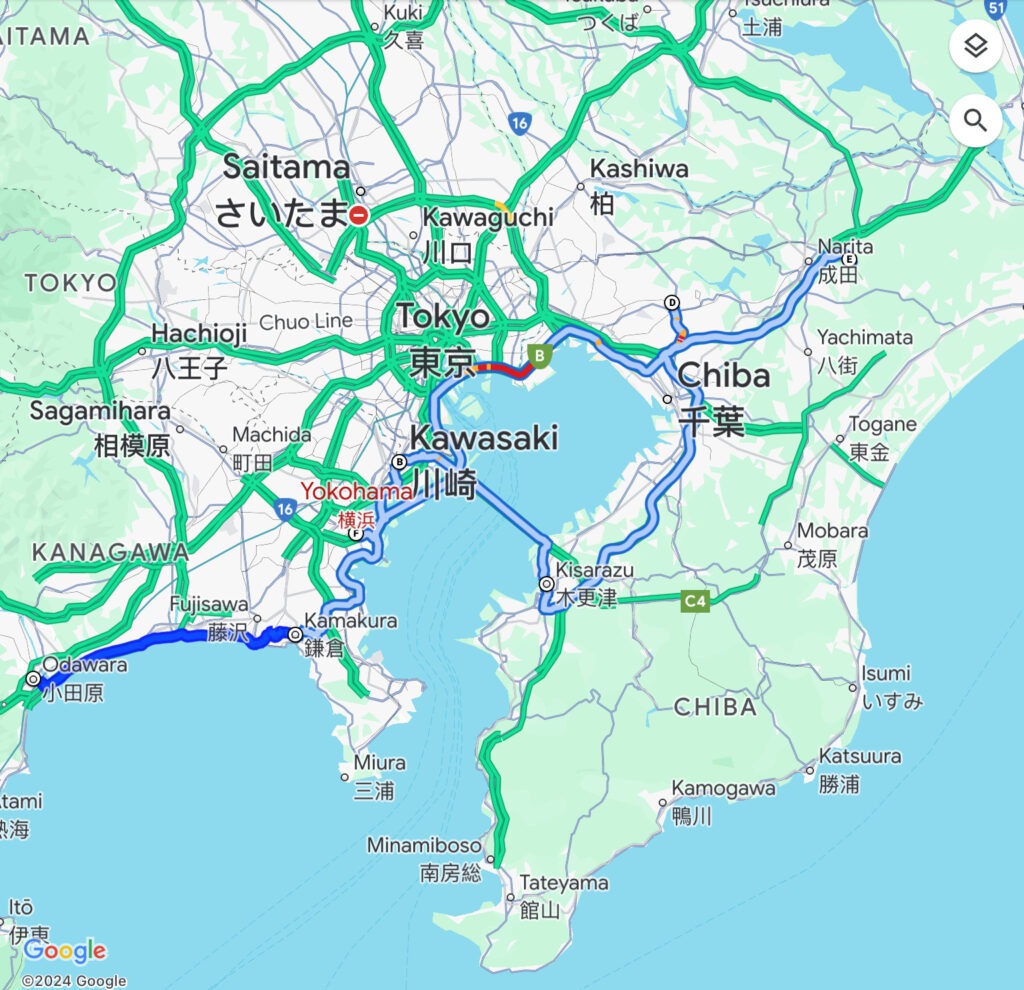
Tokyo is the kind of place you could spend many days ( or even longer ) but we spent 3 days and two nights on this visit. Now in our final days, it seemed a good time to splash out on a nice hotel and the Villa Fontaine Grand Tokyo in trendy Roppongi fit the bill nicely. We love our van but it was certainly a treat to spread ourselves out for a few days in 4 star luxury. Centrally located in Roppongi, and with Tokyo’s awesome 24 hour Unlimited Metro passes in hand we set off exploring.
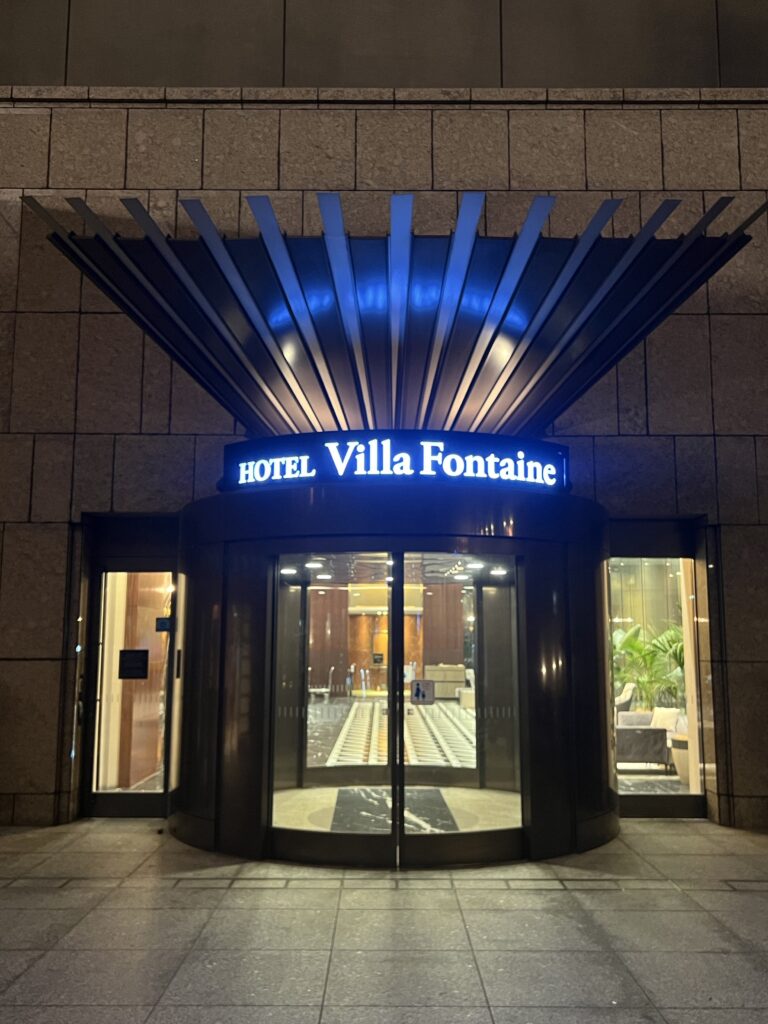
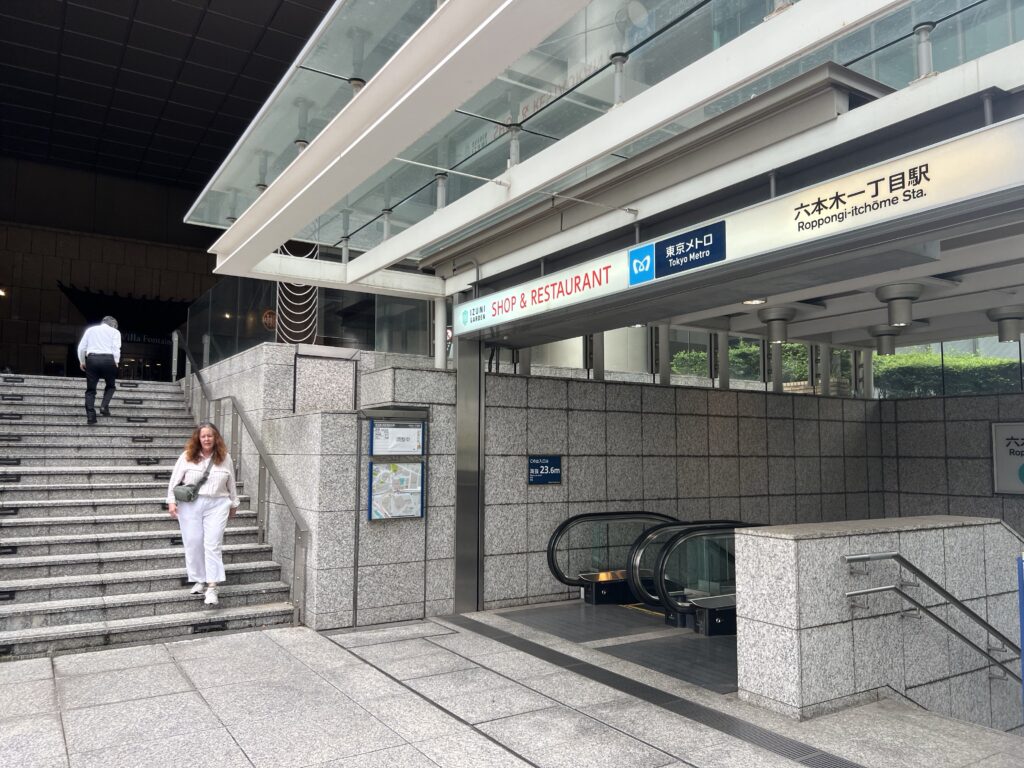
This thriving, busy, home to 20,000,000 people has much to offer- several of Japan’s more famous shrines, phenomenal food options, amazing shopping, the Imperial Palace, and one of the world’s best known pedestrian crossings with accommodation and entertainment options now at prices that once seemed unthinkable in one of the world’s great metropolises. Is it any wonder that the place was packed to the rafters with foreign tourists ? We thought Kyoto was popular – Tokyo was insane ! You certainly can’t do it full justice in the time we spent there so we focused on some specific areas this visit – the Imperial Palace, Ginza shopping district, Shinjuku/Shibuya ( home of the famous “Shibuya Scramble” ), Meiji Shrine, Yasukuni Shrine and Sensoji Temple. There is of course much more but these alone certainly kept us busy.
Starting in the very heart of downtown Tokyo, the Imperial Palace ( residence of the Emperor ) is most people’s first stop. While one can’t visit the “inner sanctum” so to speak, the grounds are huge, beautiful, full of historical landmarks and remarkably quiet considering its location. The gardens/grounds are superbly well-maintained, as befits the home of the country’s monarch. While the emperor used to reside in Kyoto, since the time of the Meiji Restoration ( 1868 ) Tokyo has been his home.
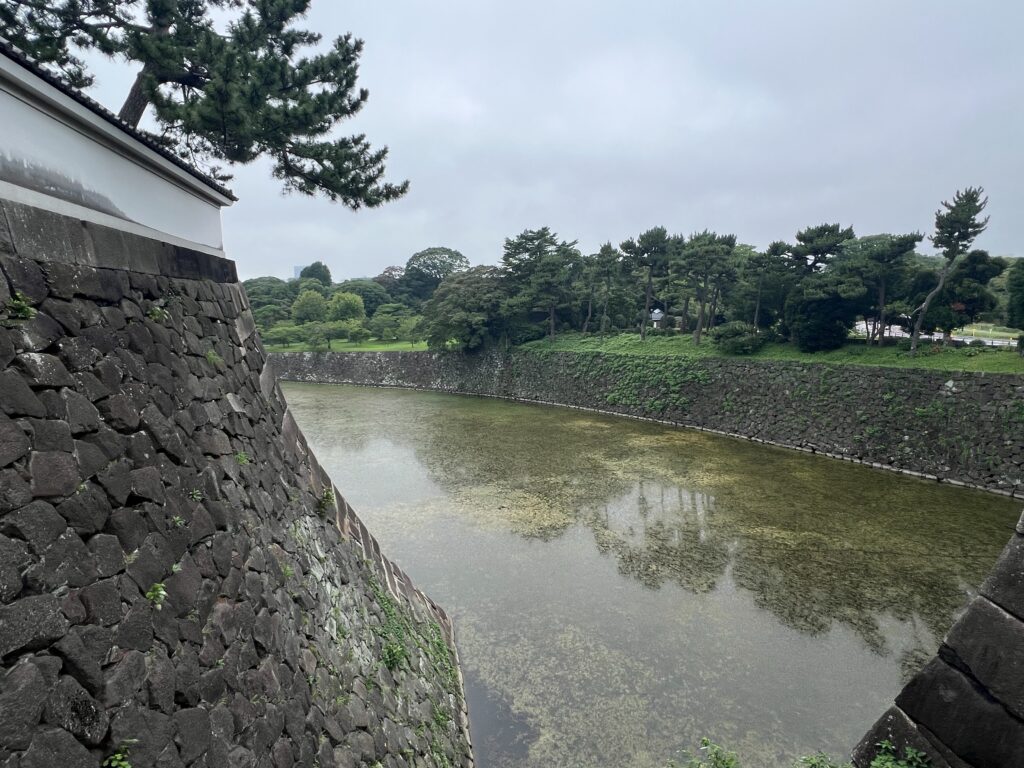
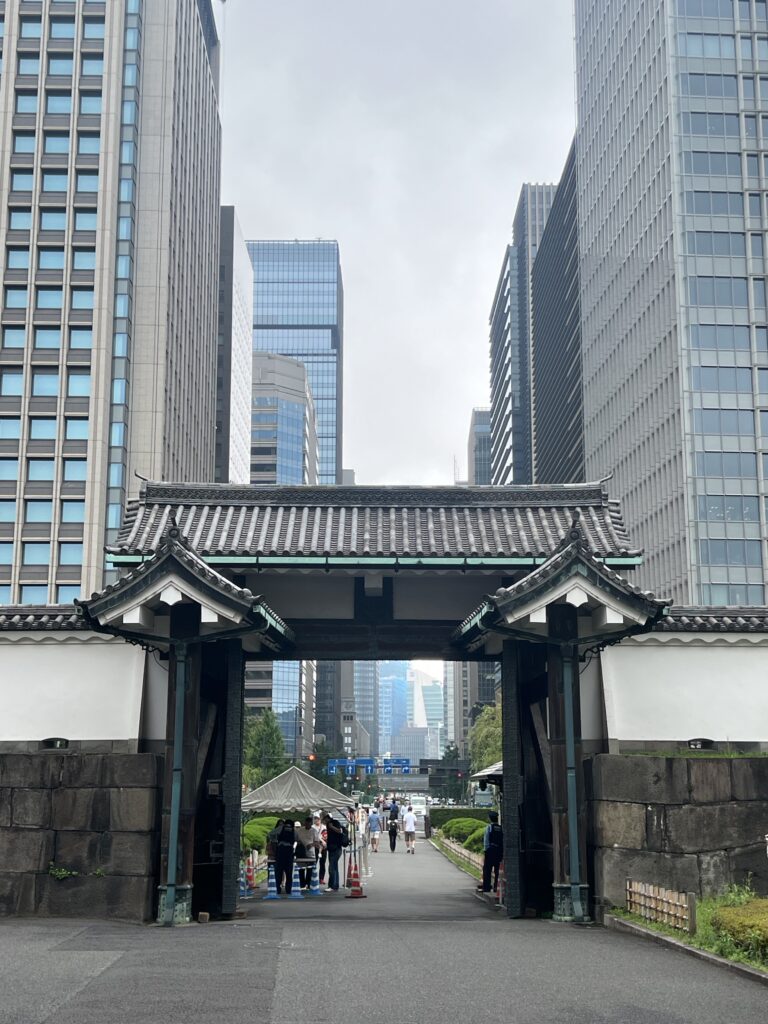
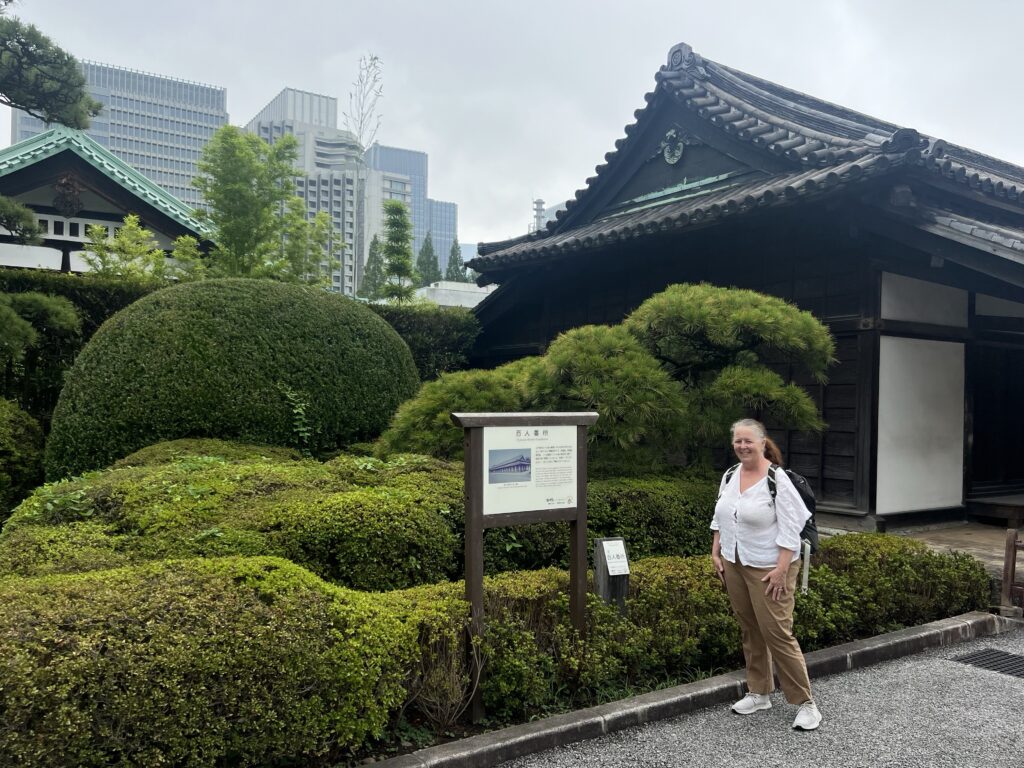
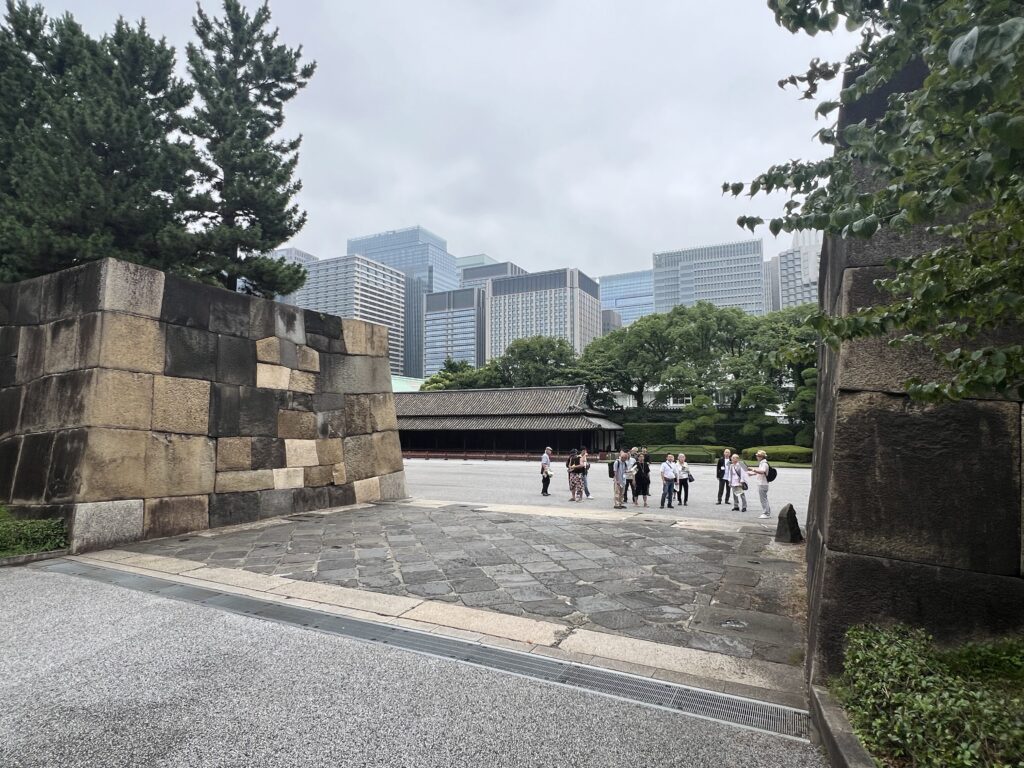
Probably Tokyo’s most famous suburb ( and reportedly its most expensive ), Ginza is not far away. Here one finds the most historic department stores, international fashion brands, all manner of luxury stores and some of Tokyo’s trendiest streets and restaurants. For mere mortals like us, much of it was “window shopping only” but still interesting to experience this most decadent part of the town. On every street corner there’s a name brand you’d recognize, foreign and Japanese.
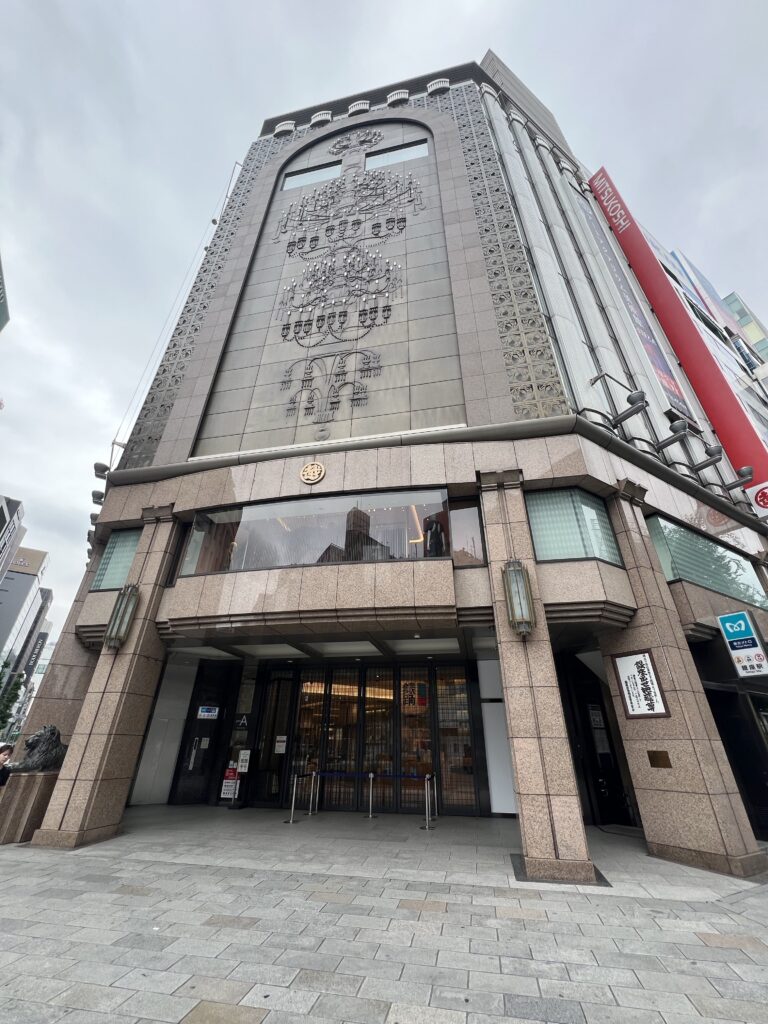
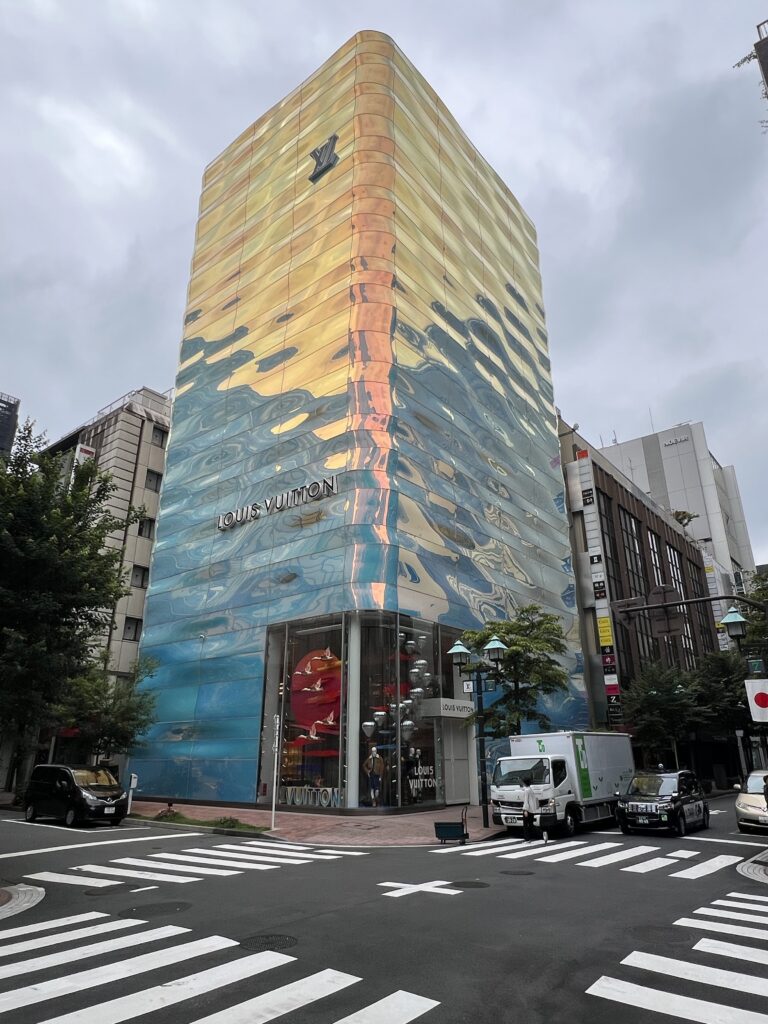
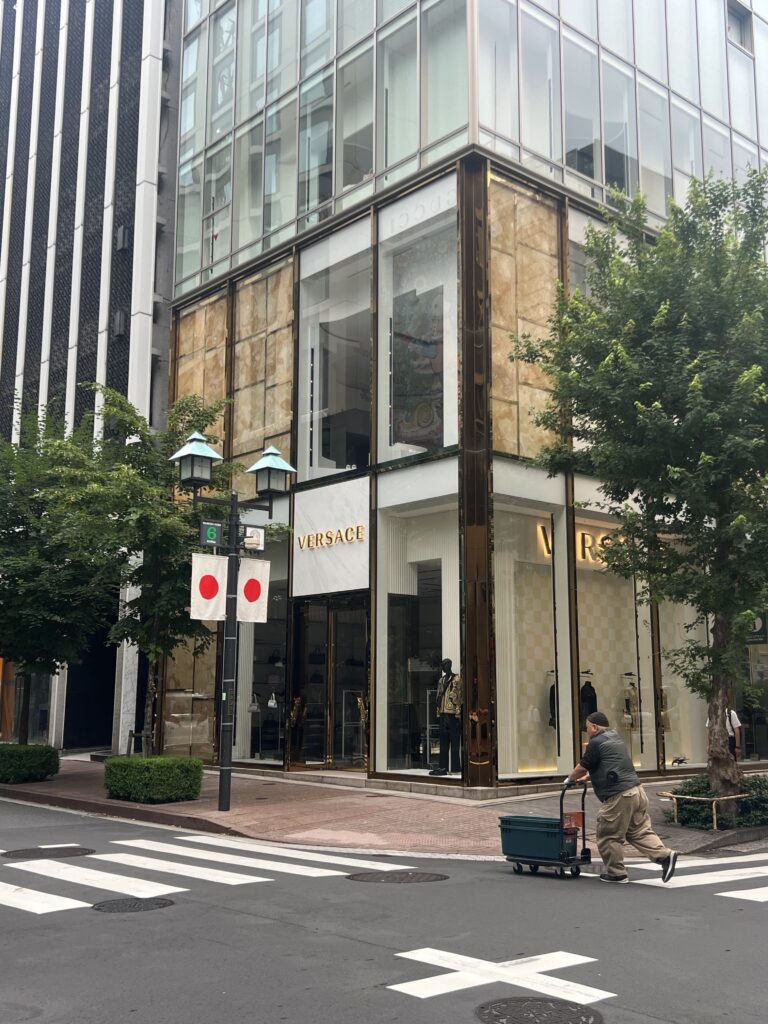
Yasukuni Shrine holds a special place in the hearts of Japanese, being the place where many of its war dead including its greatest military leaders have been interred. While this includes revered military leaders going back to Edo times, 14 Class A war criminals from WW2 ( like Hideki Tojo ) are interred there as well. While not an issue for Western nations, this causes friction, particularly with near Asian neighbours, when Japanese politicians habitually visit to pay their respects to the deceased ( as politicians are wont to do ). So, beyond being a beautiful shrine, with impressive grounds, the place is a bit controversial in the eyes of some. Our interest ( mine anyway ) was purely on the grounds and the military museum within – for any military history buff ( as I am ), Yasukuni offers some great content. It is the 3rd place in Japan we’ve seen a well preserved WW2 Zero fighter and it had by far the best one of them all. Showroom condition, you might say. Unsurprisingly it attracted by far the most attention among the hordes of foreign visitors. There was much more beyond that but two other items in particular caught my eye – a wartime Japanese steam engine, and a monument recognizing the Indian juror at the Tokyo War Crimes trial, Dr Radhabinod Pal ( see images below ). I’ve posted a little quiz ( under the image ) re the steam engine to see if any movie buffs recognize it – let me know in the comments if you do. For those into military history ( and may have seen this recent mini series ), the aforementioned Dr. Pal was the sole dissenting judge at the 1949 trial. Among all the judges of the tribunal, he was the only one who submitted a judgment which insisted all defendants were not guilty ( Wikipedia ). Of course, many were hung anyway, but his position gained him much sympathy and recognition in Japan at that tumultuous time and he is recognized for his position with a granite monument at Yasukuni.
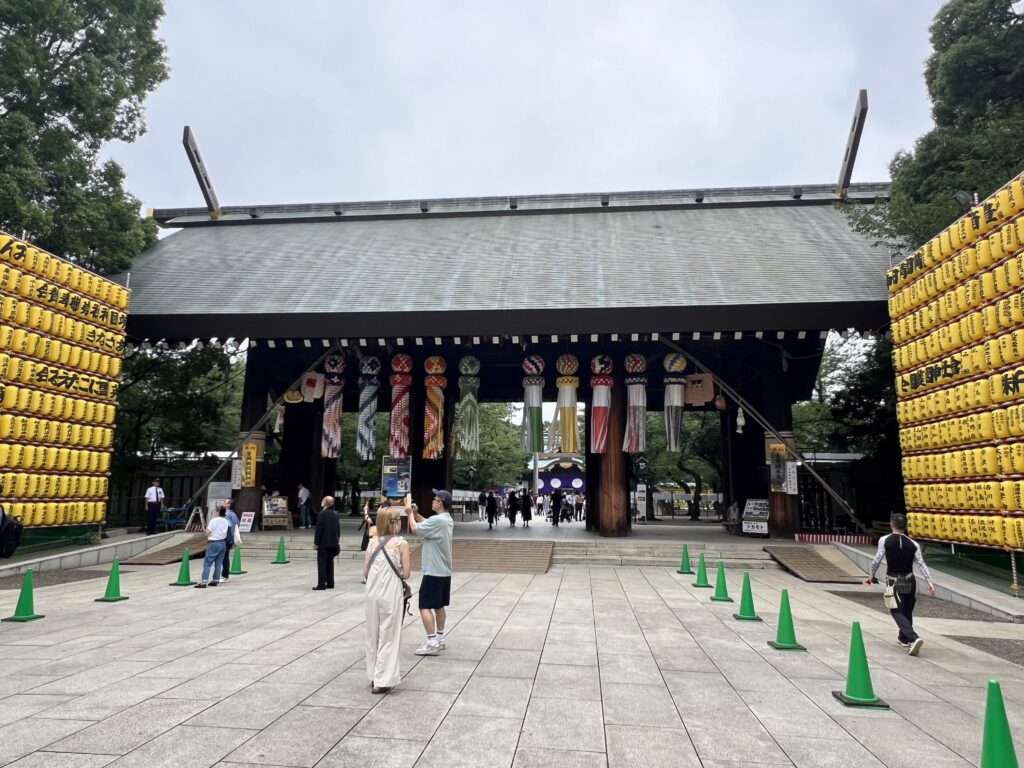
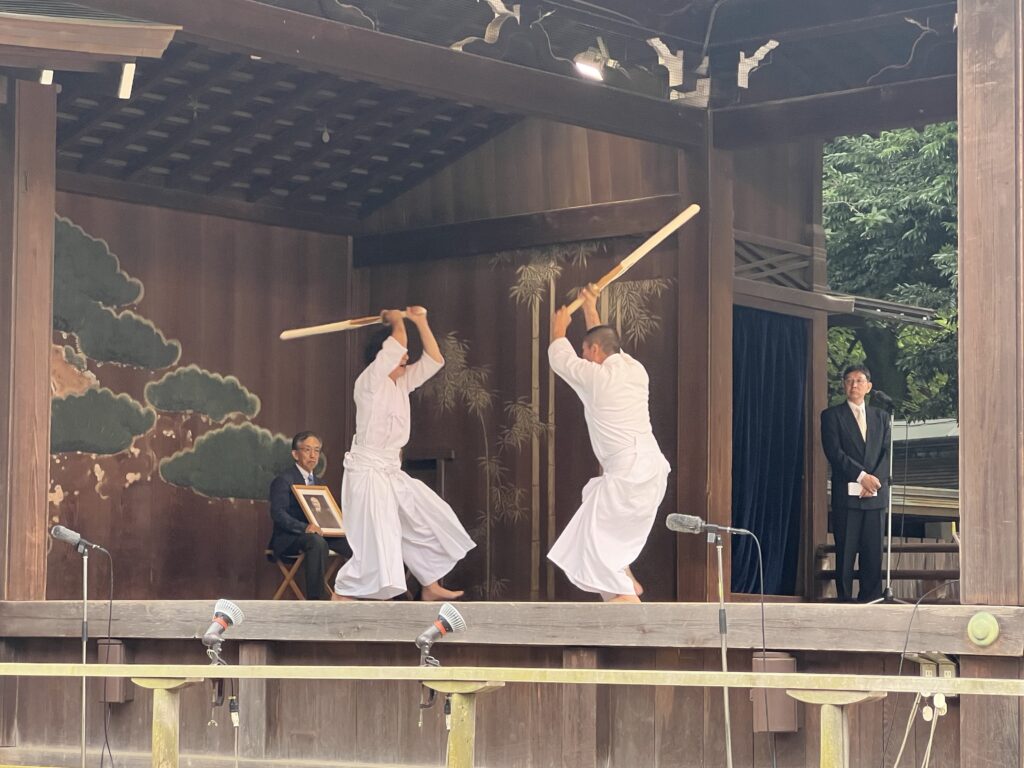
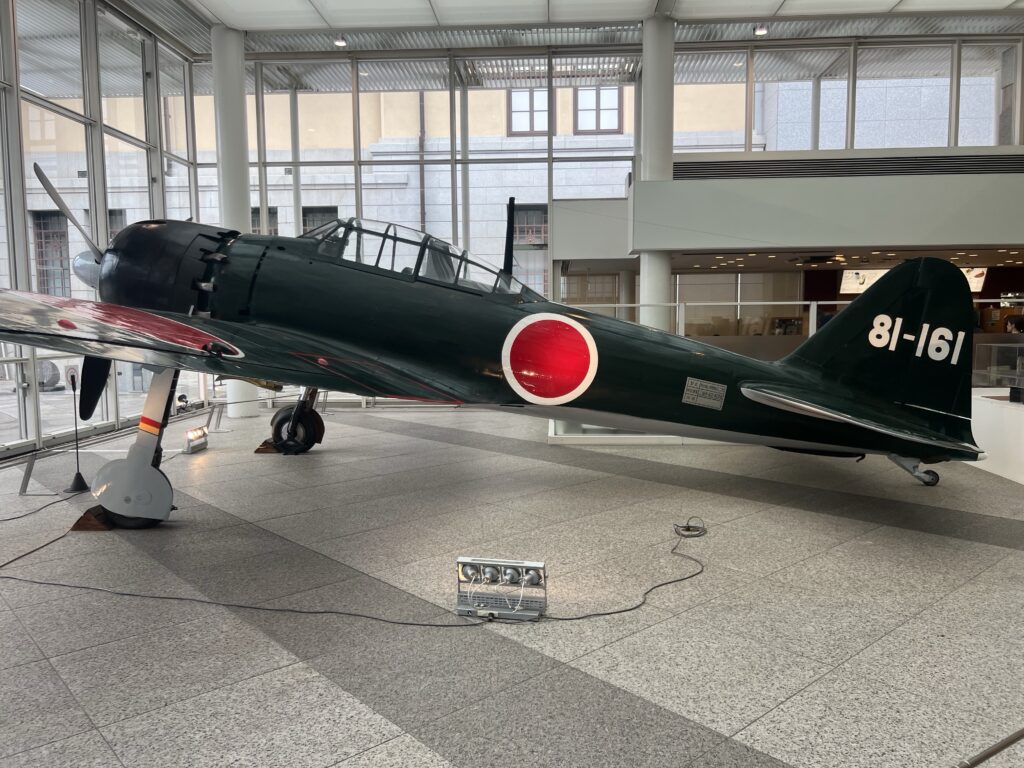
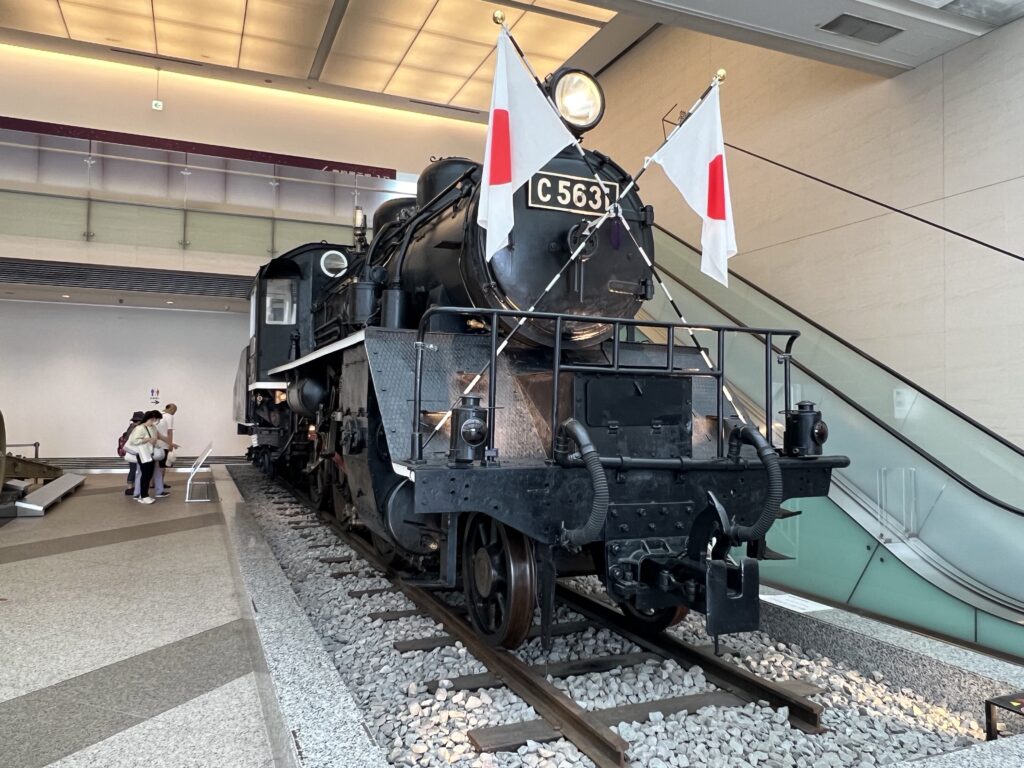
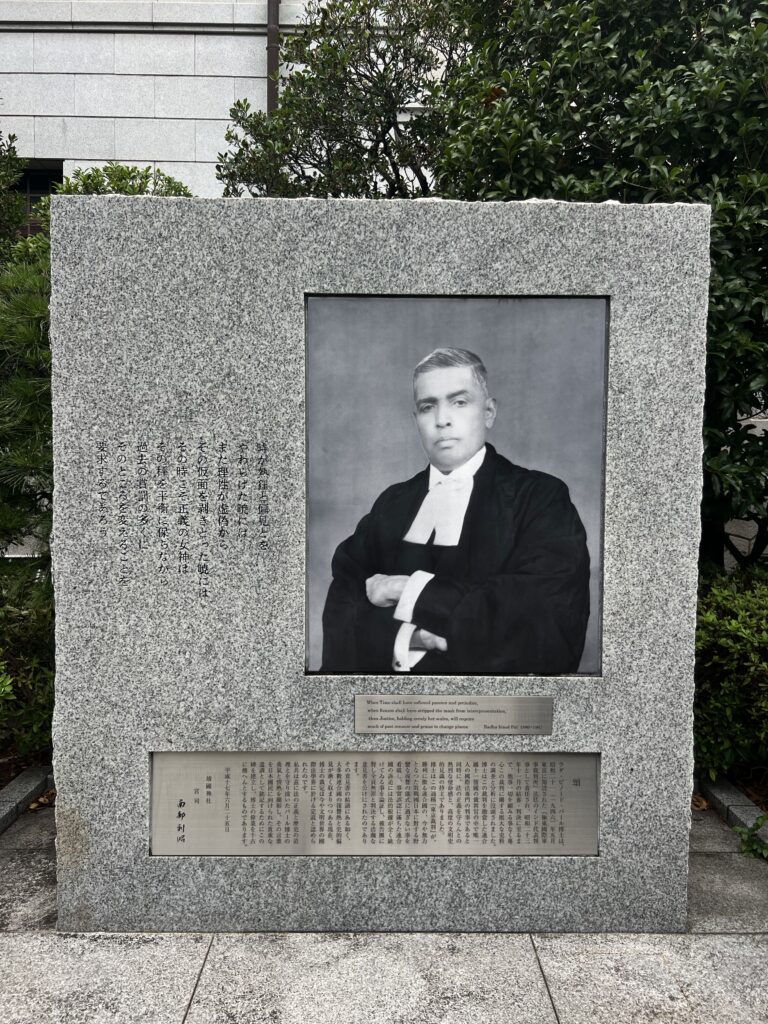
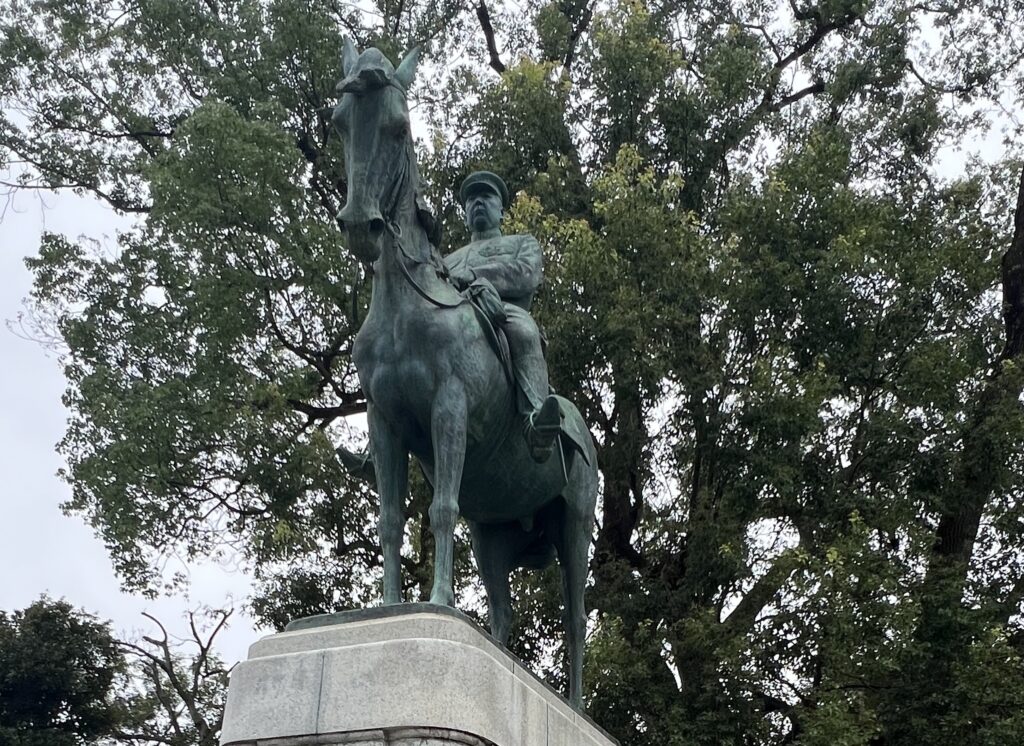
Realizing a need to buy yet more luggage to carry our things home, busy Shibuya ( a great shopping area ) was the next stop. A place on every Tokyo visitor’s checklist, Shibuya is also home to the famous “Shibuya Crossing” (or, as it’s more colloquially known) “Shibuya Scramble”. It’s that busiest of intersections in the heart of Shibuya where pedestrians from all 4 sides cross at once. It creates the impression of pure chaos but, each day, tens of thousands navigate their way through this landmark without incident. So popular is it now that many visitors hold cameras aloft filming it as they cross. You’ve surely seen this one on an Instagram or Facebook post at some point. A view from above can be had as well although ours was somewhat obscured by the wire-inlaid security glass. Oh, and we did manage to find the extra carry-on’s we needed. They would save us a couple of days later.
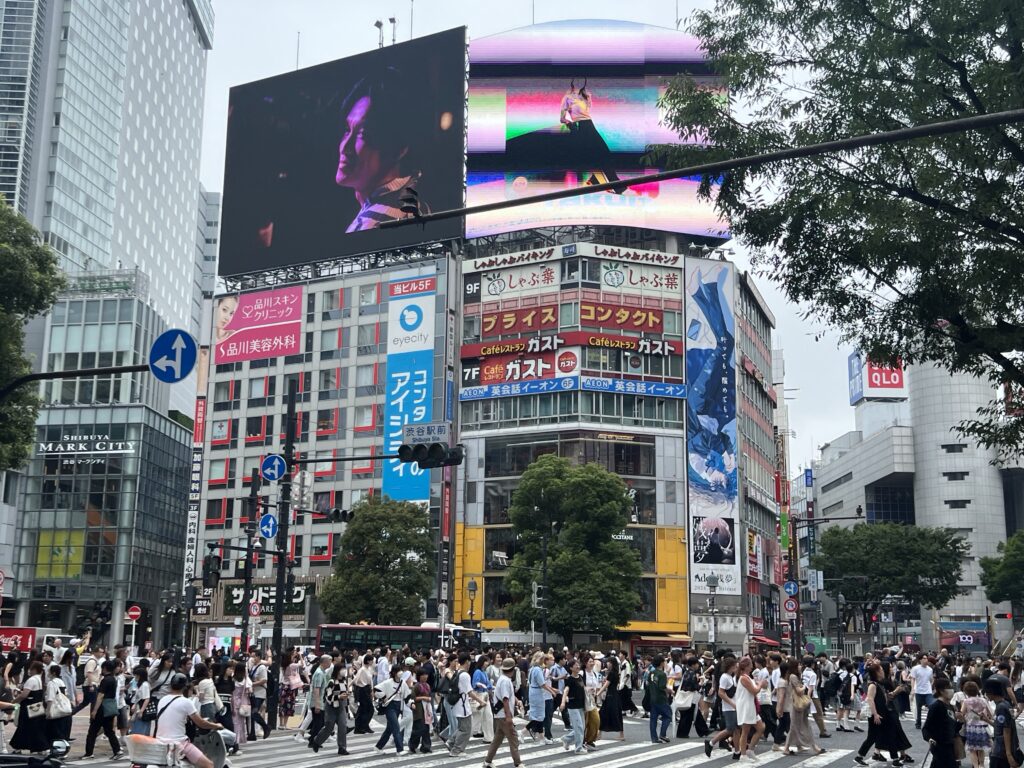
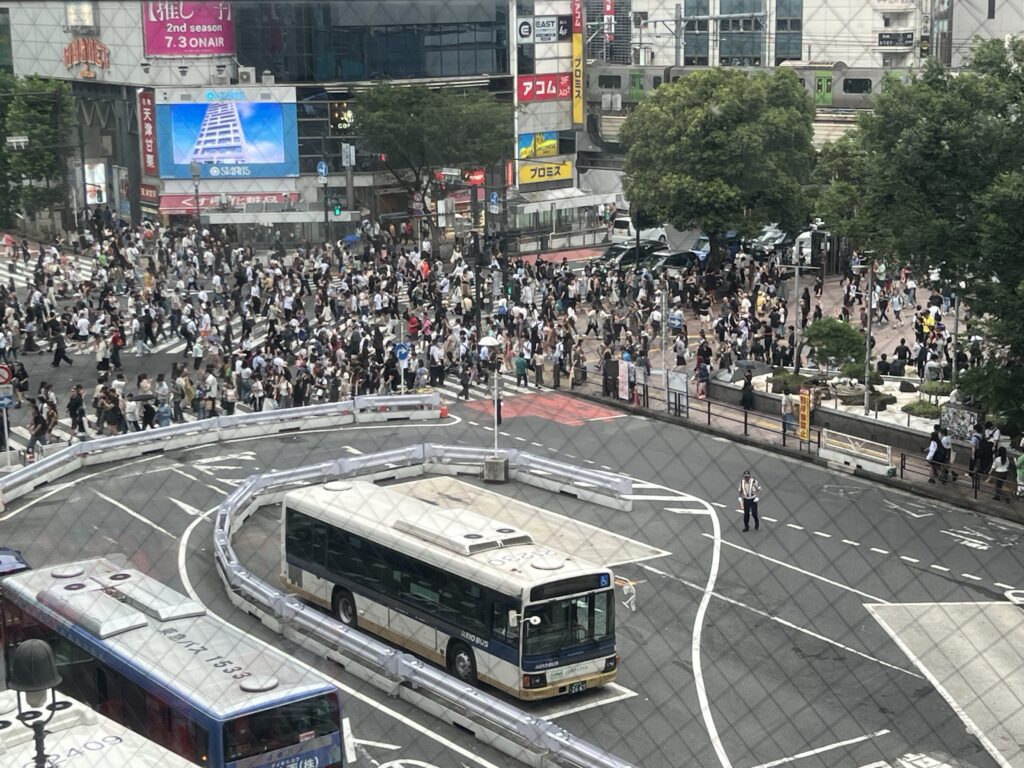
An easy walk from Shibuya is Meiji Jingu ( shrine ), also on most people’s list. The grounds here are large as well, making for a lot of walking but the huge cedars that line the entranceway provided much needed shade on what was a blisteringly hot day. Meiji is not as old as the other shrines but is impressive nonetheless.
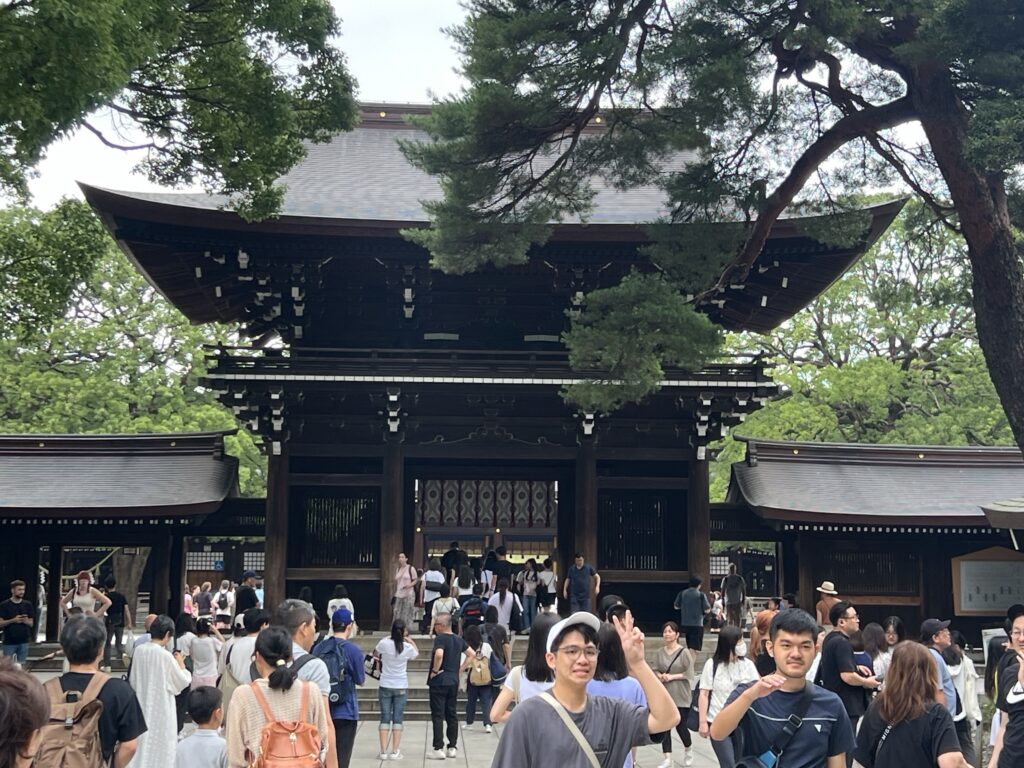
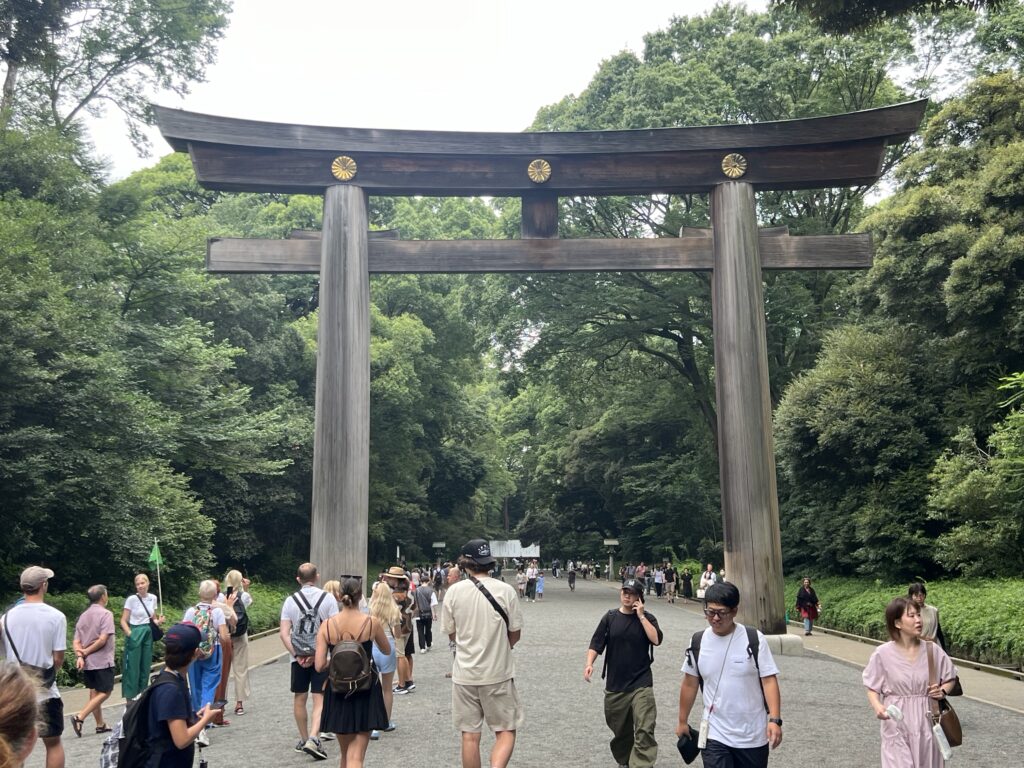
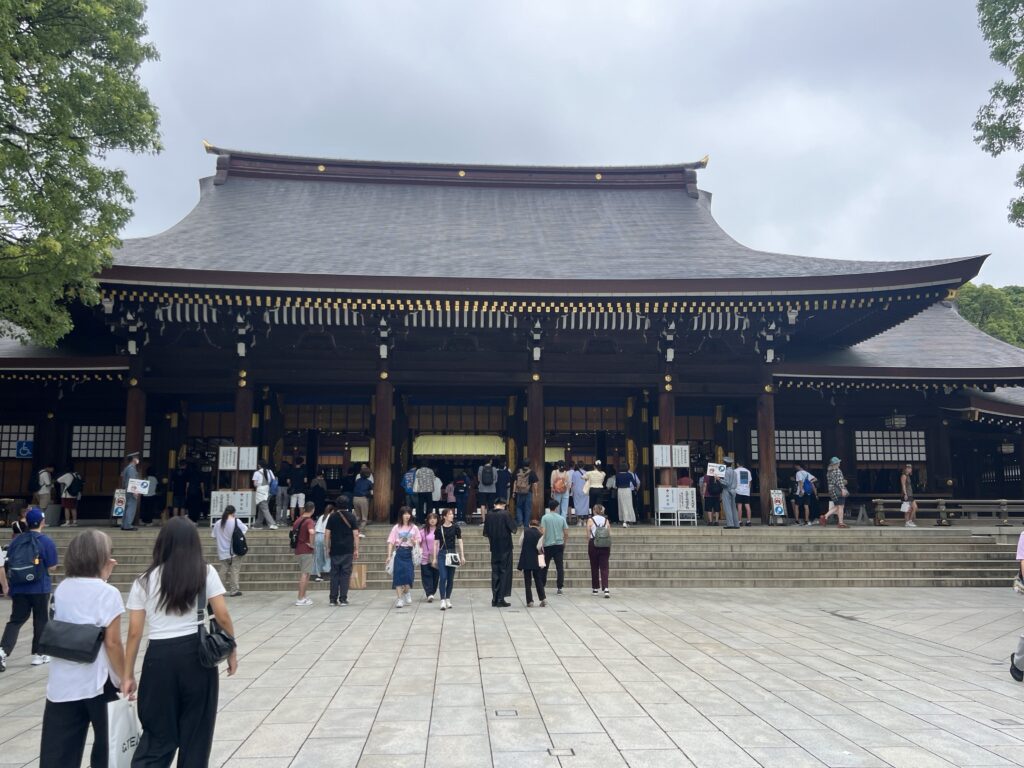
Our last visit was to one of Tokyo’s oldest temples, the hugely busy Senso-ji. Oldest, and also the busiest – it was absolutely shoulder to shoulder at this site, seemingly the most popular of all those we visited. Odd, because for us it certainly was not the most impressive – perhaps though, that had something to do with it being the last visit on one of our days there so we were getting tired and possibly a little “shrined-out”. Whether it’s temples in Asia, churches in Italy, or shrines in Japan, you sometimes reach that point !
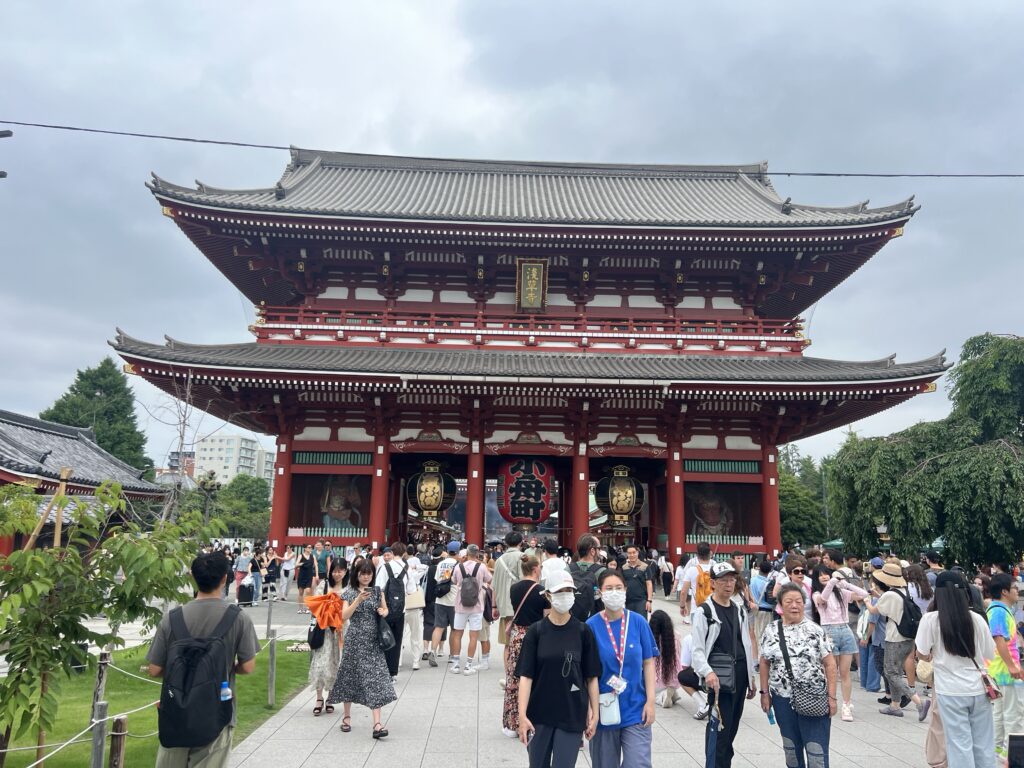
Tokyo, it’s sights, and the hotel stay especially, was a welcome break but now there was a more pressing matter to deal with. While in Tokyo we had received our shipping space confirmation but had precious little time to deliver our “empty” van to the port of Yokohama – our final days were, shall we say, rather frantic. The scheduled sail date was only a week out meaning we had to deliver a clean, empty vehicle back to the port of Yokohama ( driving right across Tokyo this time ) in just two days. With some of the van’s contents already delivered to Japan Post the week before (compressed into 5 large boxes), it was now a juggling act to determine how the remaining contents would be dispersed, either:
a) carried with us on the plane ( necessitating significant extra paid baggage ), or
b) packaged into one final large box for yet another drop off at Japan Post, or
c) given away ( if so, to whom ? ), or
d) dumped ( and if so, where, especially given the travails so far in disposing of just “regular” garbage in Japan ! ).
It’s probably no surprise that we used all four, and while the first two were expensive, it was the latter two that were by far the most difficult. Here are a few images showing how it all played out, right down to the wire:
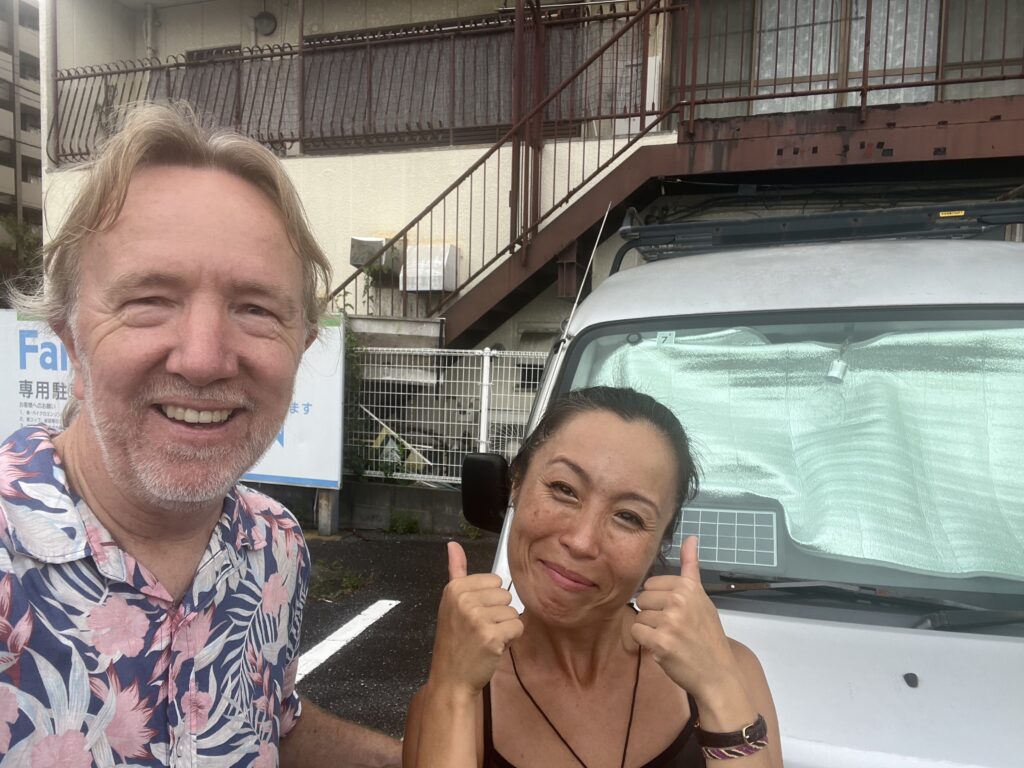
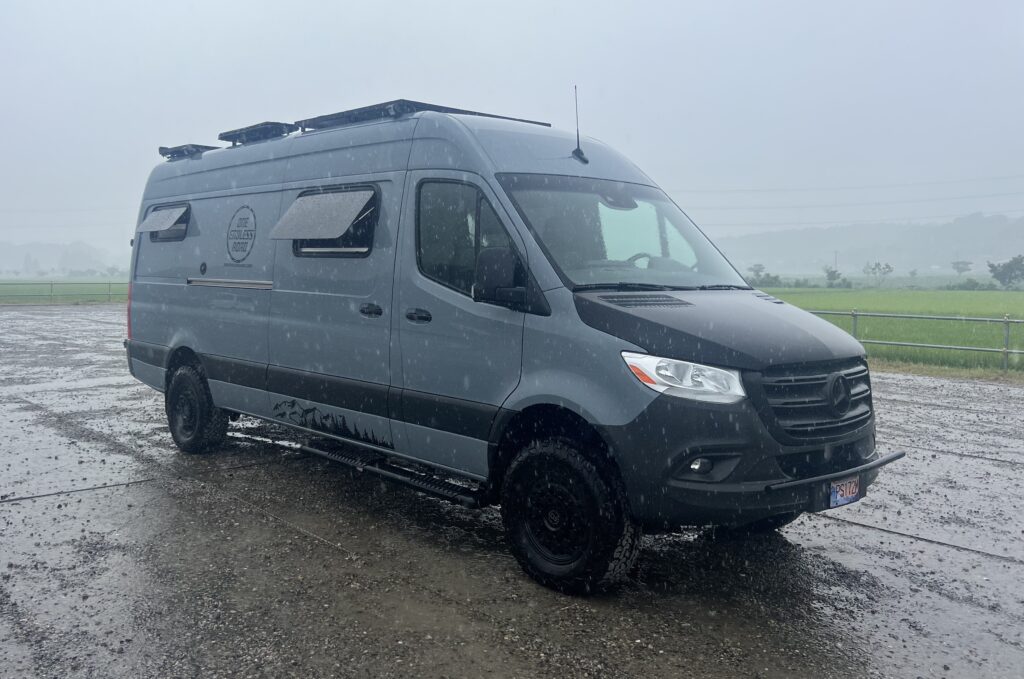
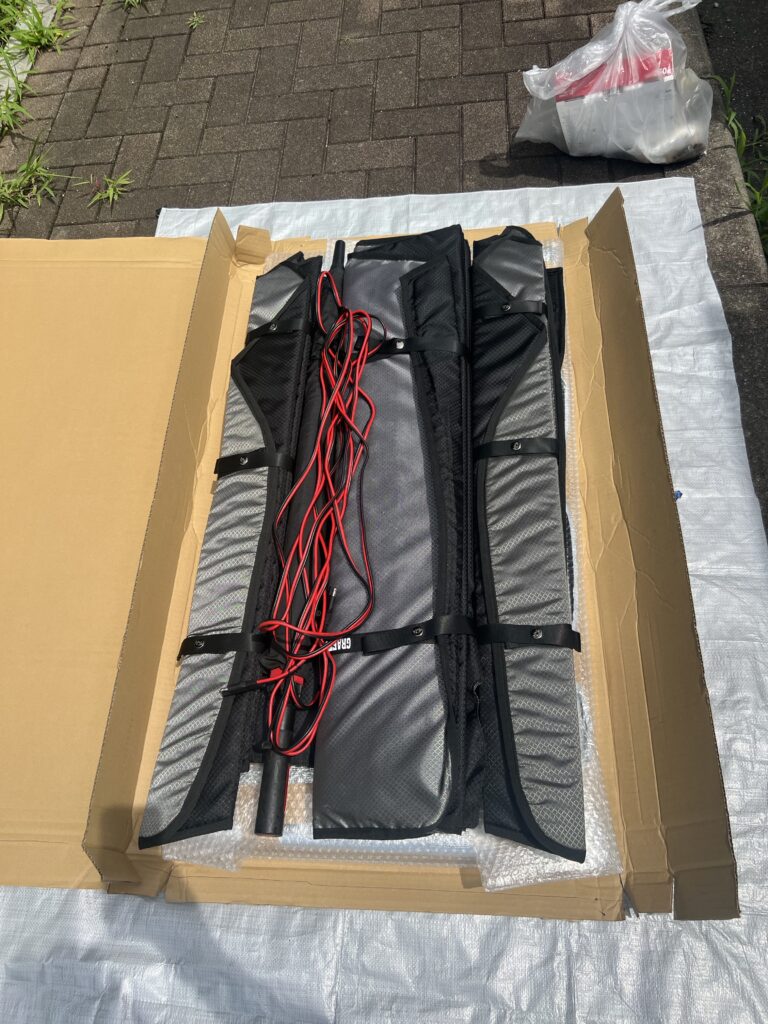
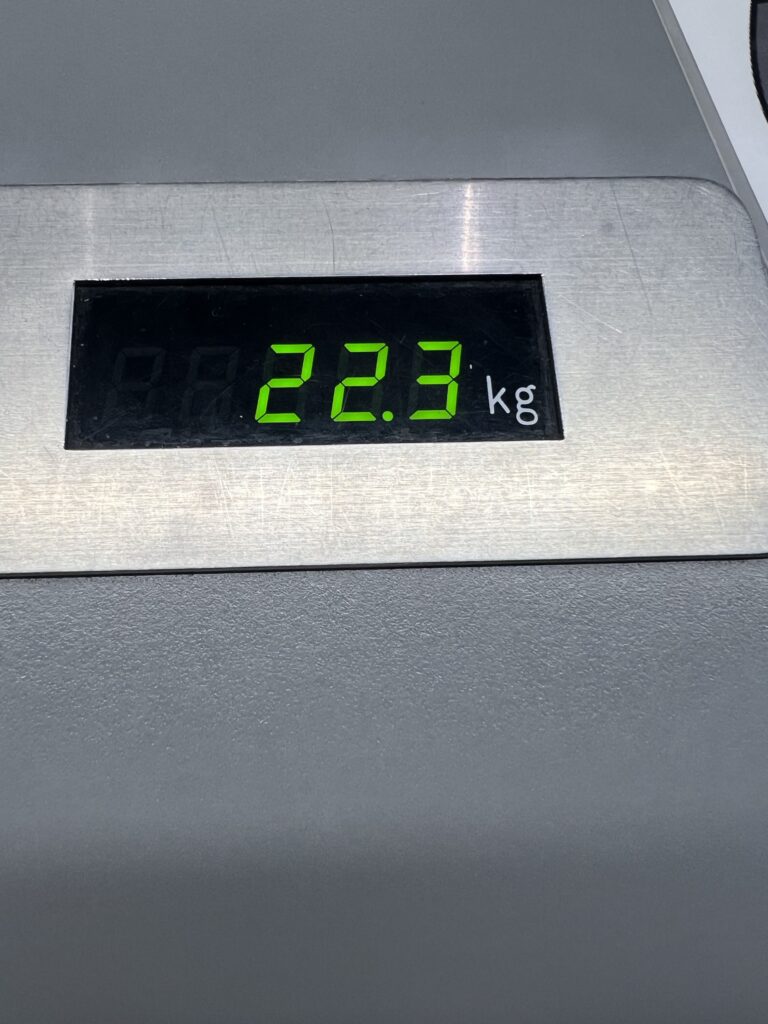
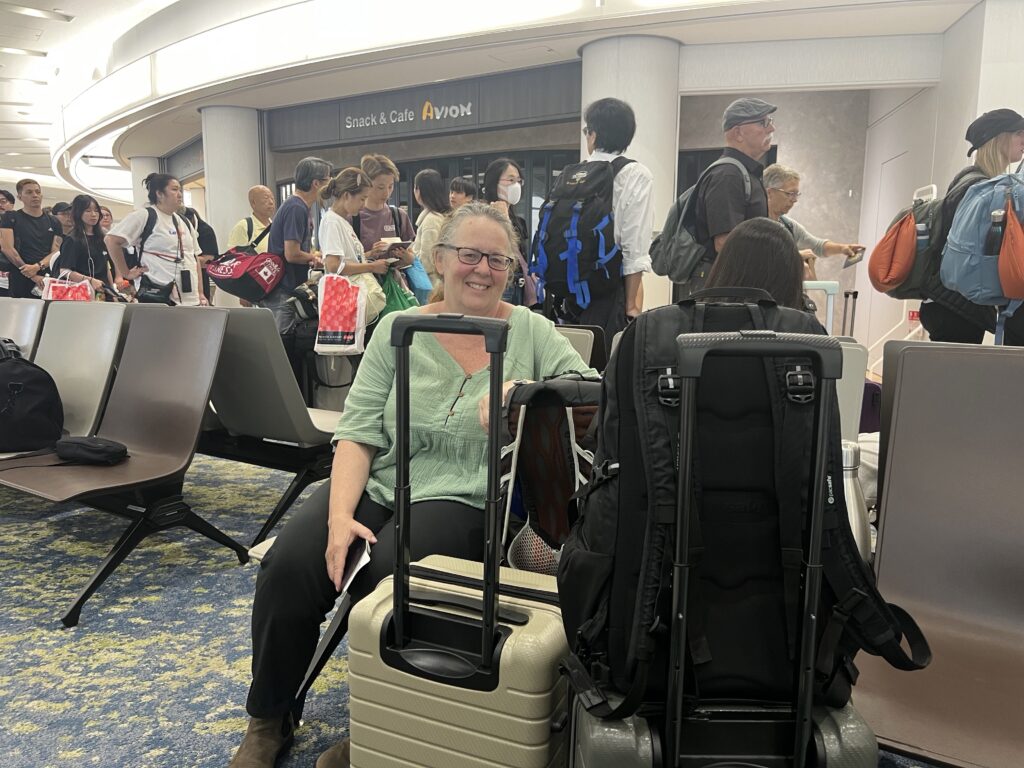
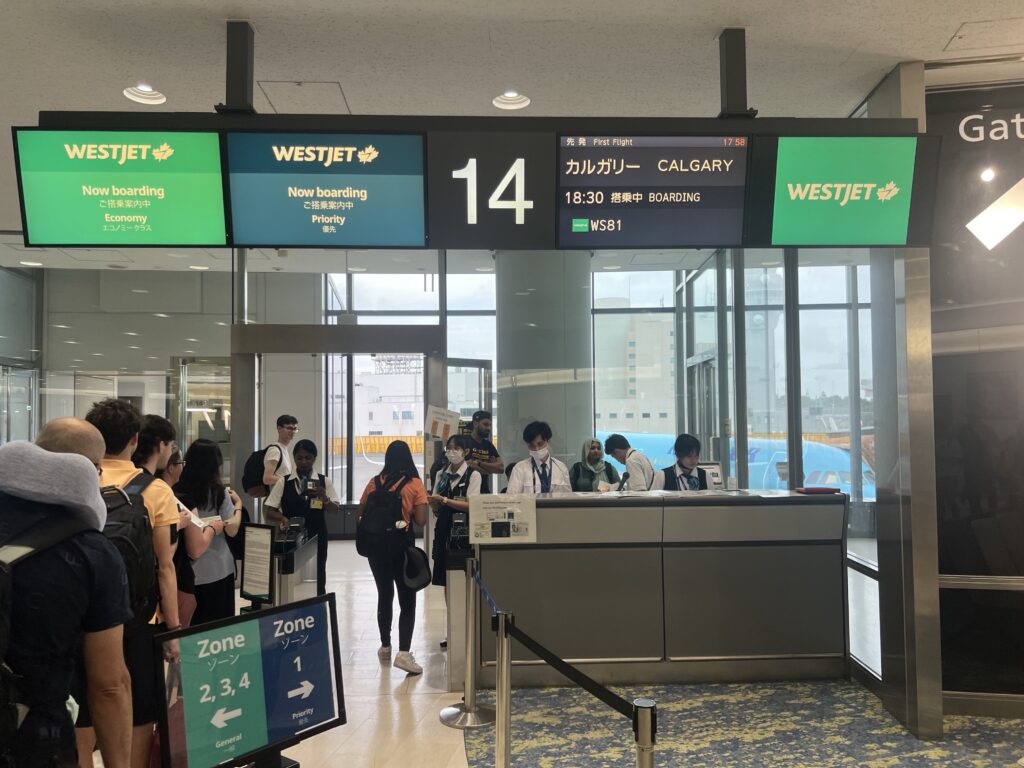
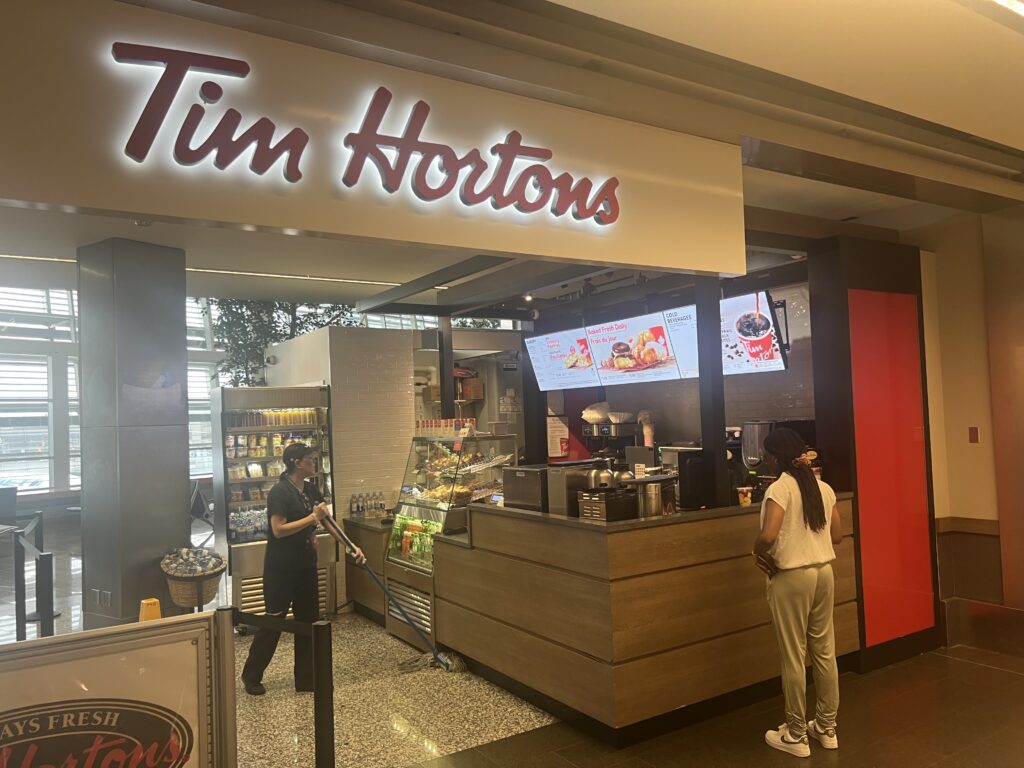
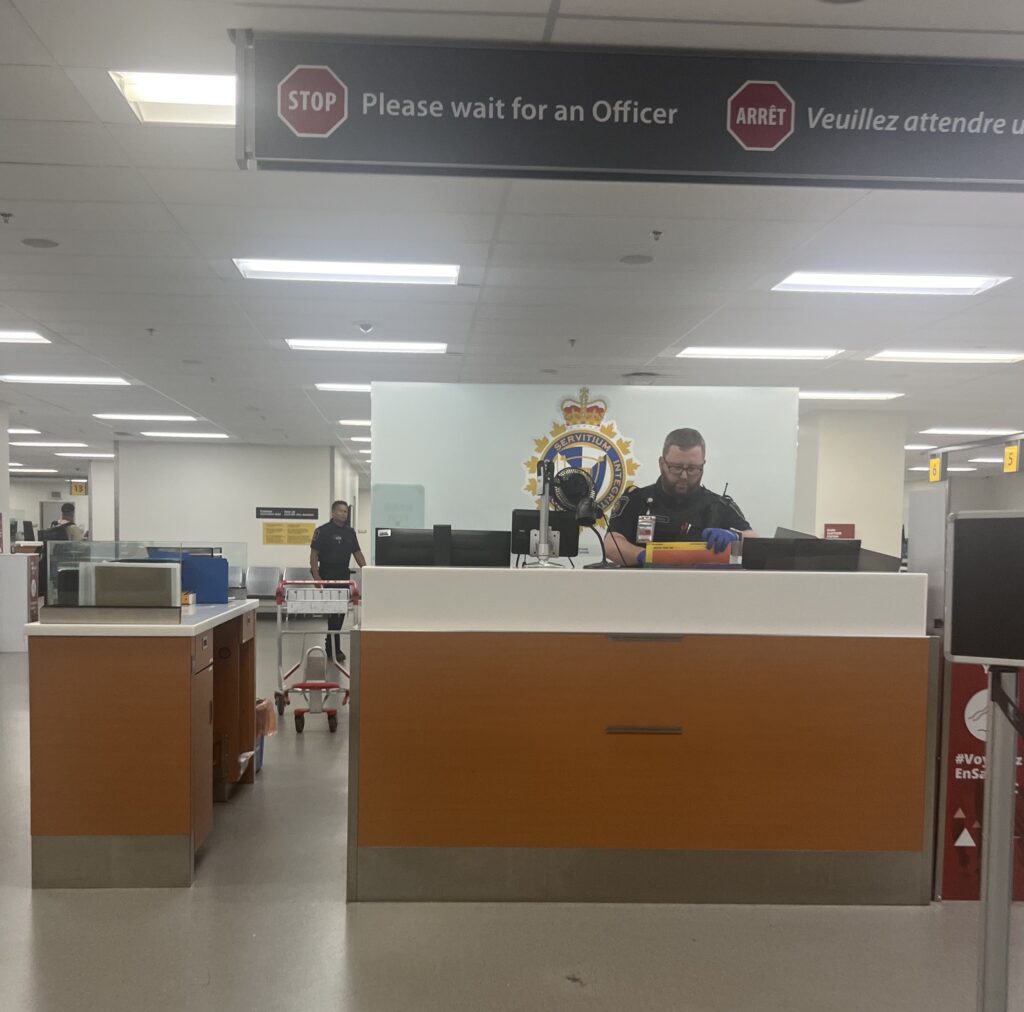
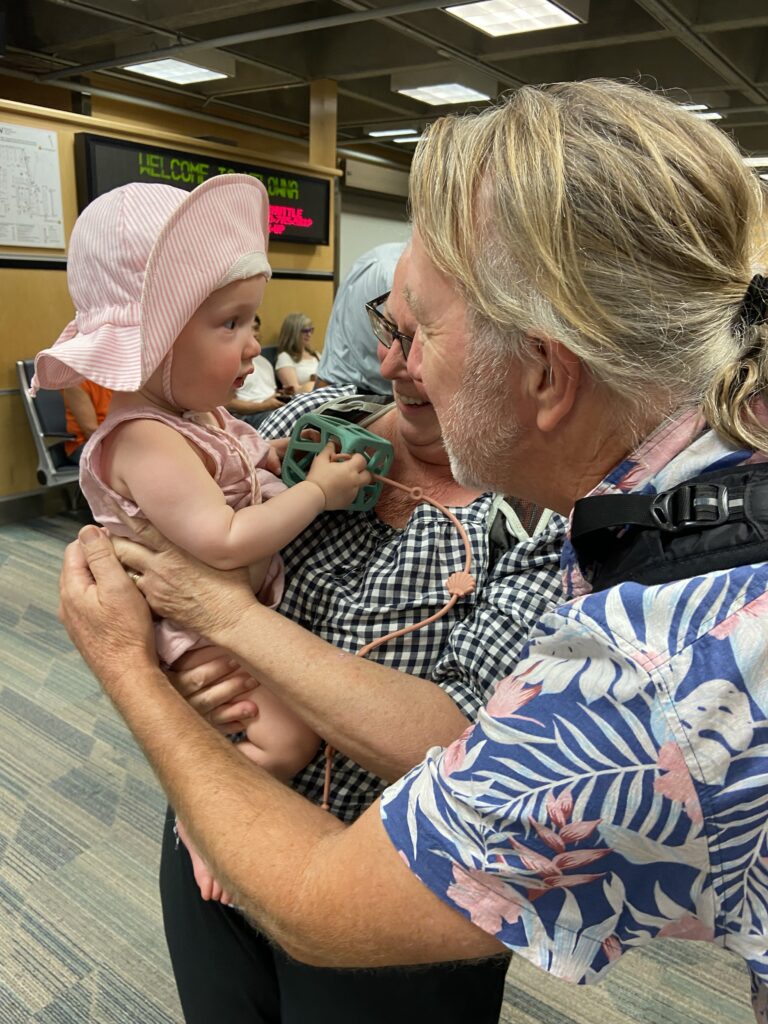

So, what’s next ? Well, a few things. We need to track our van shipment and be ready to pick it up when it arrives ( late August hopefully ), and we are certainly hoping that all 6 big parcels arrive, but that could take up to 2 months – fingers crossed. There’ll of course be lots of time with our kids and especially our new grand daughter as well as many friends to catch up with over what remains of the Canadian summer . Possibly a few shorter trips around British Colombia and Alberta once I complete the maintenance and parts replacement on the van. Beyond that, it’s our hope to take off again early in 2025. Global political winds might play a part in exactly where so I’ll paraphrase a line from the late author, Anthony Bourdain, and leave it as “Destination Unknown”.
In closing, thank you to all our readers for following along on our overlanding journey – it’s been great to have the comments, questions, messages and personal emails of support from so many of you. It means a lot to us. While this is the “final edition” for this journey ( now that we are back home ), I will follow up with a “Full Shipping Update” once the van is back in North America with final details of the process of the vehicle leaving Japan and returning to port here. I will detail all costs as well. Not a relevant, nor interesting read unless you are into vehicle shipping in this area ( it’s really just for the handful of overlanders following us who are ). But if you are just simply curious as to what that looks like keep an eye out for one more stray blog likely in August/ September.
Stay safe everyone, and sayonara for now,
Lois and Jeff

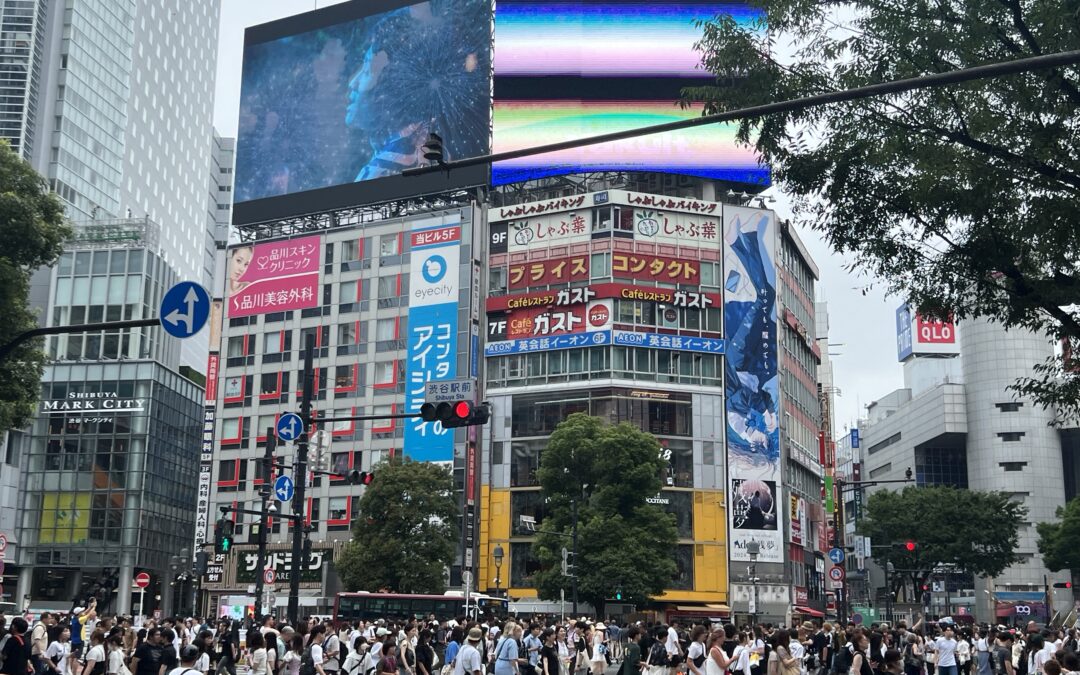

Welcome home! It was so nice to see your email coming in every Saturday morning! I enjoy every single one of them 😊 I’m looking forward to see you two when you find yourself in AB! In the meantime enjoy the family time and being grandparents.
Thank you Petra – it’s been a pleasure sharing the journey with you. And, we will definitely catch up when we go over your way !
Jeff and Lois,
I have been following your journey through New Zealand, Australia, Korea and Japan closely. I am impressed! Especially impressed with your decision to drive a van through Korea and Japan, something I would never have considered. (“Our man in Korea” from the company I was with at the time would not drive in Seoul but had a driver). We used a Japan Rail pass on our visit to Japan a few years ago to get around. Some of the places you visited made us reminisce on our trip. Again, thanks!
Hi Tjalle,
Thank you for the kind words and so glad you enjoyed sharing our journey. We did have the advantage of having travelled in both Korea and Japan before so we did know what we were getting into and we also relied on recent feedback from another Overland couple who travelled over there – they highly recommended it, and now, having done it ourselves, I would echo that sentiment. It gave us so much freedom, so much flexibility, and allowed us to keep a lid on accommodation costs, which can be crippling when you travel for such a long time. It’s also just a very relaxing lifestyle.
What did surprise us, in both Korea and Japan, was how many locals are travelling in campervans. Its exploding in popularity there. Cheers,
Jeff/Lois
Welcome back! What an adventure. What will I read now on Saturdays??
Lol!!!! You can sign up and follow some IG posts – there’s lots out there 😊. Which reminds me, I have one last IG post to do myself !
Let’s catch up this summer.
Jeff
Welcome home, guys! Thoroughly enjoyed following your adventures and insights through this blog. Looking forward to your next one! Cheers, Mark
Hi Mark,
Thanks and glad you enjoyed it! Need a little family and friends time now, some work to do around home and then we’ll start planning again – so much world out there !
It’s been brilliant to follow your latest trip – and I’m sure we’ll be making good use of your info in our own overlanding life. Enjoy the break from the break Jeff and Lois!
So nice to hear from you Philippa. Glad you enjoyed the “ride” and feel free to pick and choose the bits you like 😊. Keep in touch and reach out if any questions, look forward to seeing you guys on the road at some point…!
I enjoyed reading about your travels through Australia, New Zealand, Korea and Japan. I live in west kelowna and have travelled some myself. I’m an avid cyclist so Chile, Cuba and eastern Canada have been most enjoyable. My most fascinating trip was 15 days by camel in southern Tunisia, the Sahara. Welcome back to kelowna.
Hi Harold,
Thanks for following along, glad you enjoyed it. If you have been to Chile you likely cycled the Carretera Austral, probably our favourite part of Chile. Stunning scenery !
Tunisia we have not visited but Africa is on our radar – the camel trip sounds wonderful !
Dear Jeff and Lois,
We enjoyed your updates from Japan. It was great meeting you in Oma a few weeks ago, just before our visit to Hokkaido. Thanks for your tips! It’s good to hear that everything went well and that your vehicle and all your stuff are on their way to Canada. And yourself of course.
We wanted to let you know that our nine days in Hokkaido and the rest of our stay went very well. We were happy that the weather during our six-week trip was quite good, with only three days of rain and lots of sunshine for the rest.
We are already looking forward to hearing about your next travels. And maybe, just maybe, we might meet again 🙃. Until then, take care.
Best regards,
Jan and Wilhelmien
The Netherlands *
Hi guys,
So very nice to hear from you both and yes, of course Lois and I remember our meeting in Oma ! Glad you enjoyed Hokkaido and that the weather was generally good for you. It’s an amazing place.
There is in fact a reasonable chance our paths may cross again since Europe ( in our van ) is definitely on our horizon…! Stay tuned !